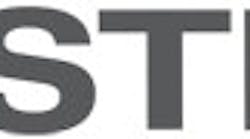Oradell, N.J., located approximately 15 miles northwest of midtown Manhattan, is an affluent community with a population of approximately 8,000 residents. The employees of Oradell’s Department of Public Works (DPW) are responsible for the maintenance of the borough’s wastewater collection system, buried beneath 57 miles of tree-lined streets. The wastewater running through these thousands of feet of underground piping eventually finds its way to the regional Utility Authority plant, which ultimately is responsible for its treatment. The borough of Oradell remits a fee based on the metered volume of wastewater annually dispatched.
Similar to most American communities today, Oradell found itself struggling with a variety of diverse budgetary and economic issues. One of these issues was the local sewer system, which was suffering from inflow and infiltration (I&I) problems due to an aging infrastructure, along with increasing concerns relating to basement backups and rising treatment costs. With federal and state grants becoming increasingly difficult to obtain, where would the money come from to fund and address these mounting issues?
An Unexpected Solution
The answer suddenly appeared one day after a basement backup caused more than $27,000 worth of damage to a longtime resident’s home. Wishing to prevent this type of incident from ever happening again, community leaders began seeking a solution. Gerard Quinn, Oradell’s risk manager, mentioned that he was familiar with a company, Eastech Corp. that provided “smart” wastewater management systems for the specific purpose of reducing sewage treatment costs and increasing municipal revenues. Included within this smart family of solutions was the ability to prevent sanitary sewer overflows and basement backups. The suggestion sounded good, but funding was still an issue.
Dianne Didio, Oradell mayor at the time, initiated a meeting with Eastech. The company proposed that, following a preliminary audit of the community’s wastewater collection system, projects would only be undertaken if the opportunity existed for self-funding, either through revenue increases or cost reductions generated by the projects themselves.
Prioritizing the Problems
Eastech engineers, along with experienced personnel from Oradell’s DPW, initiated a five-person team to achieve the predetermined goals that would implement a fully integrated solution to address the community’s collection system issues. The following areas were selected for immediate evaluation:
- • Basement backups;
- • Shared infrastructure reimbursement;
- • I&I detection; and
- • Treatment charge validation.
The plan was to address each of these issues one step at a time, with the resulting increase in revenues or ultimate decrease in costs generated by the projects themselves providing the funding for a smart solution that would efficiently serve Oradell’s residents for years to come.
Basement Backups
Due to the problems initiated by excessive amounts of fats, oils and grease, basement back-ups had become a reccurring concern in Oradell—not only for some unfortunate homeowners, but also for the borough, which was being assessed a $1,000 penalty fee per incident by its insurer while having to shoulder the unexpected cost of overtime payments for municipal employees responsible for the cleanup.
As a test run, the team selected three problematic sites and installed cellular-based overflow prevention monitors capable of text-alerting operating personnel of an impending backup event. Installation at each site was completed within 30 minutes without the requirement for confined space entry. An alert was received within the first nine months of monitoring: A downstream pipe collapse had caused a potentially damaging situation. Maintenance crews were immediately dispatched and able to clear the blockage prior to any resident having to face another incident resulting in thousands of dollars in damages. The $1,900 overflow prevention monitor had not only done its job, but it more than paid for itself within its first year of operation.
Shared Infrastructure
Two separate wastewater lines from adjoining communities traveled through Oradell on their way to the Utility Authority’s treatment facility. The lines included wastewater discharge from 105 homes and two country clubs. Because both lines had never been monitored, there was no plan in place for reimbursement to Oradell of either neighboring community’s treatment charges. A pair of high-performance billing meters was installed at the entry point from each neighboring community to determine reimbursement charges for the wastewater emanating from each neighboring town. Within a few weeks of collecting data from the meters, it quickly became evident that the increase in annual revenue from the initiation of these actions would garner additional funds ranging from $45,000 to $55,000. Both meters would pay for themselves within their first four months of operation.
Inflow & Infiltration
The installation of a temporary high-performance billing meter in tandem with the Utility Authority’s main billing meter for the community showed that, of the total annual charges incurred for wastewater treatment, 45% were due to I&I. The team began employing a new technology from Eastech that was capable of detecting, measuring and locating I&I without the requirement for confined space entry or periodic maintenance.
In an eight-hour workday, 16 I&I detection monitors were installed within a 7-linear-mile basin of the community. The I&I detection monitors were capable of pinpointing areas specifically responsible for the highest volume of I&I to within manhole segments of 300 ft. Incidentally, in a section of the street containing only 28 homes with an expected treatment cost of $4,000 annually, the charges due to excessive volumes of groundwater were running closer to $23,000. Remediation of this small area alone would result in annual treatment cost savings of almost $20,000.
Billing Validation
The Utility Authority billing meter is a combination Parshall flume/ultrasonic level sensor. This type of meter is incapable of directly measuring flow, but it is designed to determine volume strictly by ascertaining level. When levels rise above the hydraulic measurement capability of the flume, the treatment charges also keep rising in relation to level rather than actual flow.
This occurred in 2011 during Hurricane Irene. As the level in the flume rose, the daily volume calculated by the level sensor increased to 8.2 million gal per day (mgd)—although the maximum pipe carrying capacity is only 3.8 mgd—which equals a charge of $16,400 to the community, resulting in a physically impossible single-day billing increase of $8,800.
“Oradell is now in the process of permanently installing [its] own high-performance hybrid technology billing meter that will not only have the capability of budgeting treatment costs and monitoring overall volumes of I&I, but will ascertain flows under all conditions so that incidents involving major storm events will never again burden the community with unnecessary expenses,” said Laura Graham, Oradell borough administrator.
Leading the Way
“In addition to increasing our revenue stream each year by $85,000, Oradell is proud to have been the initiator of a project that will not only benefit our current and future residents for years to come, but will also provide a roadmap for other communities to follow when struggling with funding issues involving the protection and maintenance of our country’s aging wastewater infrastructure,” said Joe Murray, mayor of Oradell.
Popular perceptions are not always true. The common complaint is that, while business is proactive, government is not; while business is innovative, government is not. Oradell stands as a prime example of how a forward-thinking community was able to initiate the smart wastewater collection system and, in addition to self-funding the entire process, provided local residents with a return on taxpayer investment of more than $85,000 annually.
Download: Here



